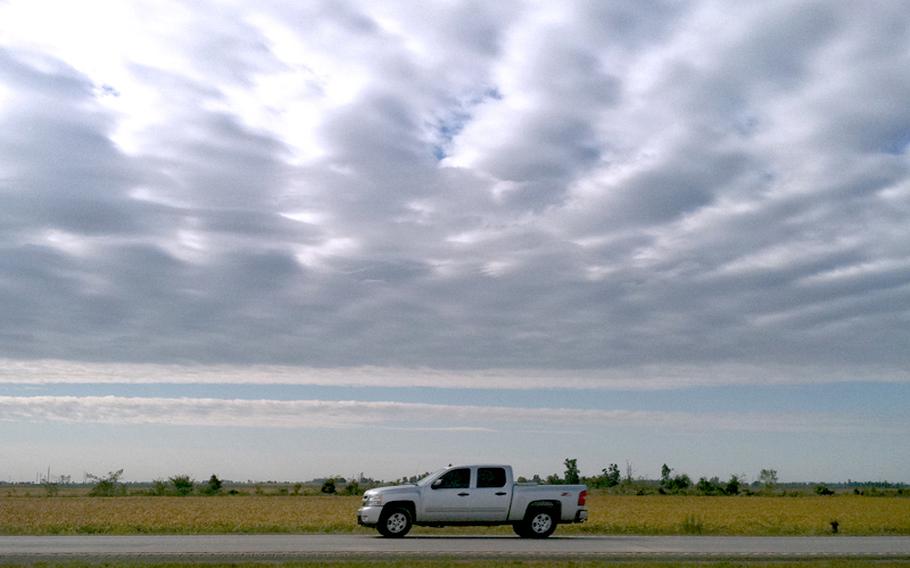
(Joe Gromelski/Stars and Stripes)
WASHINGTON — Just a few weeks after his 2005 deployment to the Middle East ended, Chief Petty Officer Ron Verdoza smashed his SUV into a neighbor’s car.
Three years later, after returning from Afghanistan, he backed his Mustang into the wall of his garage.
“Both times, I just wasn’t focused on driving like I needed to be,” he said.
A new study released by USAA this week echoes that sentiment. USAA, which provides auto insurance to the military community, found a 13 percent jump in at-fault accidents for troops in the first six months after returning from deployment, compared with the six months before they deployed. Drivers with three or more overseas tours saw a 36 percent increase in accidents.
The three-year study is being shared with military officials and traffic safety experts in an effort to find ways to help returning troops stay safe while driving.
Researchers said that most of the accidents were caused by objects in the roadway and “losing control of the vehicle,” both indications that troops aren’t fully prepared for the pressures of civilian driving after lengthy stints overseas.
Scanning streets for signs of roadside bombs, for example, can lead servicemembers to ignore road signs and stoplights on U.S. roads. Drivers used to asserting their right of way in a Humvee convoy can find it irritating and unnerving to get stuck in traffic.
The Army Surgeon General last year issued guidance acknowledging that combat driving techniques — critical in places like Afghanistan — are potentially harmful back home, and suggesting drivers find ways to calm themselves and avoid stressful situations.
Erica Stern, a University of Minnesota professor and a research fellow working with the Army’s rehabilitation and reintegration division, said other studies have shown that problems plague all troops who ride in vehicles overseas, not just the drivers.
“Everyone in those vehicles is responsible for safety, so we see everyone being affected,” she said.
The USAA study found that troops with longer deployments were also more likely to be involved in accidents. Troops younger than 22 saw a 25 percent increase in accidents, the biggest jump of any age group.
Todd Nelson, an Army master sergeant severely injured by a suicide bomber while driving in Kabul, said he struggled with overly aggressive habits when he started driving again after his recovery.
“It’s not the panic attacks and the obvious signs that are the problem for most guys,” he said. “I felt like I was driving safe, but my wife’s knuckles would go white whenever I drove.”
Stern said many troops she has interviewed have admitted anxiousness and confusion upon returning to civilian roads, but are reluctant to ask for help for fear of being labeled with a mental health problem.
“And nobody should think these issues alone constitute serious medical problems,” she said. “We’re talking about training and behaviors that can lead to difficulties.”
The study reviewed claims records for more than 158,000 USAA customers with 171,000 deployments over three years. Stern is working on a similar research project with military installations to expand on those results, and to study if regional driving habits have any effect on troops when they return from deployment.
shanel@stripes.osd.milTwitter: @LeoShane
Post-deployment accidents by the numbersThe following statistics compare the driving records of servicemembers in the six months after returning from a deployment against their records for the six months before deploying.
13 percent: Increase in at-fault accidents for all servicemembers.23 percent: Increase in accidents for soldiers, the highest of any service.25 percent: Increase in accidents for servicemembers under 22 years old.27 percent: Increase in accidents for servicemembers with two deployments.36 percent: Increase in accidents for servicemembers with three or more deployments.Source: USAA Driving Safety Report 2012